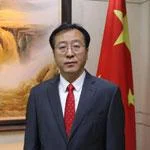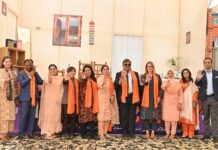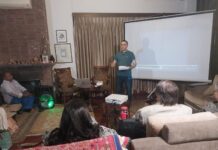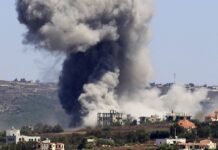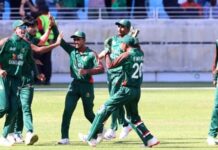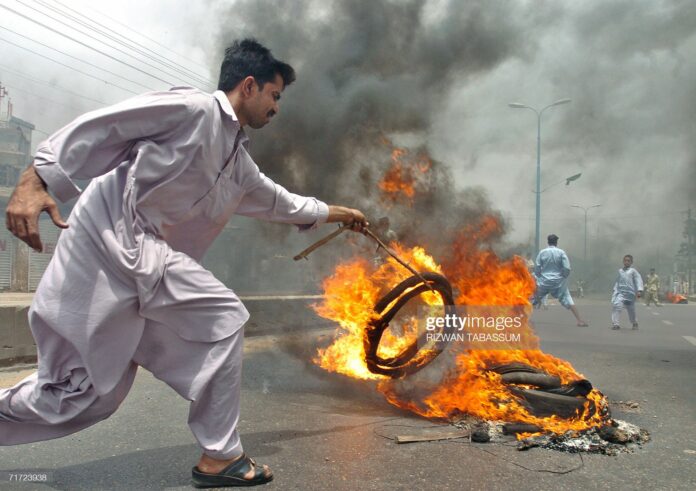Almost everyday, the Twitter forums or channel tickers are overflowing with some “breaking development” in the political landscape of Pakistan. From the looming danger of anyone arrested to the one where someone might have been acquitted of all wrongdoing in the eyes of the court of law. Are these symptoms of a stable polity or society? Certainly not, or to borrow a phrase from a political movement in Pakistan; ‘absolutely not”!
In that situation; whether it is the plight of the people stranded and devastated by the floods in all the four provinces of the country after almost two months, economy showing no signs of any recovery, gradual breakdown of the law and order in major urban centres and the creeping influence of religious militancy in the settled and non-settled areas; is not the concern of the state or that of the most organized unit of the state; the government.
The difference now is, not much is left to be preserved. It is for the politicians, the people with authority and people who create opinion; to see how much they contributed to the inferno. Conclusively, there are few avenues available for the people to return back to sanity. Failing which, the country is in for a deep political crisis culminating in an endless civil war
In any sane civil society, the media outlets are generally regarded as the guiding light for the common man, the government and the powers-that-be to steer the country out of the quagmire. That is not the case unfortunately. Media, being regarded as an integral part of the deep state concept of the “fifth generation” warfare, is deeply divided; one faction blindly following the deep state and the preferred “bride”, the political party, the other faction supporting the opponents of the order is fanatically against any position or stance taken by the sitting establishment and the government.
The result of that state of affairs is the developing deadlock which is looming over the economy, polity and society. Despite the fact that political discourse in the developing economies never reaches the point where the things are interpreted as starkly as the colors; black and white; today Pakistani media is the best portrayal of this position.
We might be wondering as to how these things developed overnight to the point of no return. The political discourse of the 1990s was much more decent in its colourings as compared to what Pakistan experienced after the exit of Musharraf from Pakistani politics. At that point of time; the media was still holding back its cards of impartiality and fairplay, as much as it could. No journalist, except for the few top guns, could be labeled as aligned to a particular faction.
That situation began to move the other way in the post-2008 times in a manner that intelligence agencies did not hide their preferences and accordingly the division among the journalistic fraternity was encouraged to the point of written brickbatting; an art now perfected by all the concerned factions. All the high grossing anchors at precisely 2200 Hours could be seen speaking their hearts out via teleprompter in 90 seconds, which would be the base of their frivolous argument for the next 55 minutes.
The first blatant show of force of how the deep state through the spy agencies made its division of the fourth pillar of the state known was the 2014 PTI dharna. While the majority of the journalistic audience preferred to stick to the norm of impartiality or at least not to resort to “embedded reporting”, there were many embedded journalists who did not hide their preference for the leader of the opposition and thought that supporting him and his party was something like a “national duty” to be performed at all costs.
The 2018 elections were the last moment; when the RTS fiasco during the night of the results was the last thing impartially reported by the media. The formation of the government at the centre by the PTI and other provinces set into motion the final division of the battlelines within the journalistic fraternity which hold true to this day.
The deep state, suspected to be behind the results of general elections in 2018, was taken in highest regard by the succeeding political structures in place. The intimate complaint by the secretary general of PTI Asad Omar over the intelligence agencies raids on PTI BOTS during the height of PTI opposition to the established order in July 2022 was in effect the indicator of the fact that many a fifth-generation combatans raised by the deep state was nothing but a PTI stalwart; in the journalistic community as well as amongst the political cadres.
If the political activists could be pardoned the blatant taking sides in any issue; it was an unpardonable sin for any journalist to sit as an embedded entity in any political camp. Here the journalistic community did not mind that to be part of political trends prevalent in the country. In the journalistic standards; the best reporter covering a political beat is the one, who knows more than an emotional political supporter. However, there is a basic assumption that he does not compromise his journalistic credentials for the sake of news; or does not act as an advocate of that political trend.
That basic gospel was done away with impunity during the period between 2018 to date. In 2019, the political government at the centre was almost equated to national security and anyone opposing the same was little more than a traitor. The traitors as projected and defined by the government were not sitting idle either. They were cultivating their own cadres to counter the onslaught from the dominant political order and the deep state. As the result; each one negated the other as a religious duty; secure in their own right waging a “jihad” against the other evil political entity.
The result of that division in the journalistic fraternity is that every politically polarized faction knows, whose YouTube channel, whose Vblog, he or she should listen to. It is not following an objective political education, rather all are in the search of favourable political analysis; which is “music to the ears”.
All these divisions have ended up in the deep political polarization which afflicts the country in a most embarrassing manner. Whether it is the presidential address, which is infact a democratic ritual adopted by the democracies the world over, the divergent views on next year’s election year, what should be the composition of the caretaker government, and so on. In not a single issue, we can see any semblance of a result-oriented discussion. All Pakistanis with concern see on the TV channels are deadlocks on almost all the pressing issues.
Going forward, the situation seems bleak as stances on Twitter or on the newspaper columns show scant possibility of any rapprochement between the warring factions. Pakistan had a misfortune of being divided in a societal sense, whenever attempts were made to regiment it; in 1958, in 1977, in 1999 and in the quasi-arrangement in 2018. After each storm; it has emerged more divided than ever.
The difference now is, not much is left to be preserved. It is for the politicians, the people with authority and people who create opinion; to see how much they contributed to the inferno. Conclusively, there are few avenues available for the people to return back to sanity. Failing which, the country is in for a deep political crisis culminating in an endless civil war.





